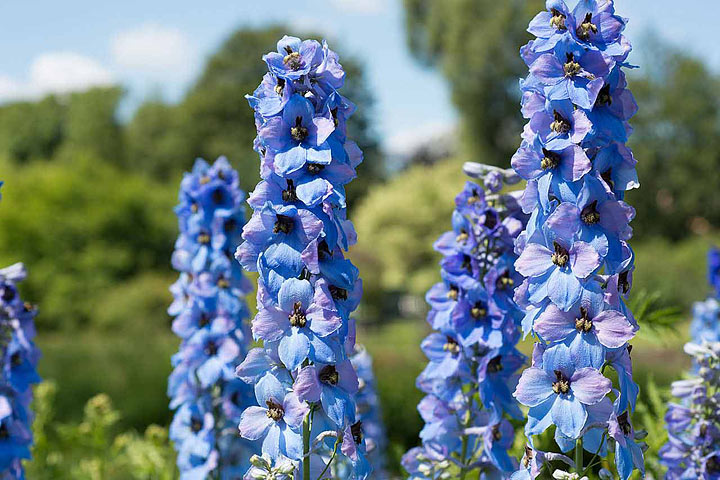
Description
Delphiniums are perennials grown for their showy spikes of colorful summer flowers in gorgeous shades of blue, pink, white, and purple. They are popular in cottage-style gardens and cutting gardens.
Delphiniums are a favorite of many gardeners and sometimes a challenge. They prefer moist, cool summers and do not fare well in hot, dry summers. The plants also dislike sudden wind or rain.
Except for the dwarf perennials, most delphiniums need staking.
Quick Facts
Botanical Name: Delphinium
Plant Type: Flower
Sun Exposure: Full Sun/Part Sun
Soil Type: Loamy Soil
pH: Alkaline/Basic
Hardiness Zone: 3, 4, 5, 6, 7
Flower Color: Blue, Pink, Purple, White
Bloom Time: Summer
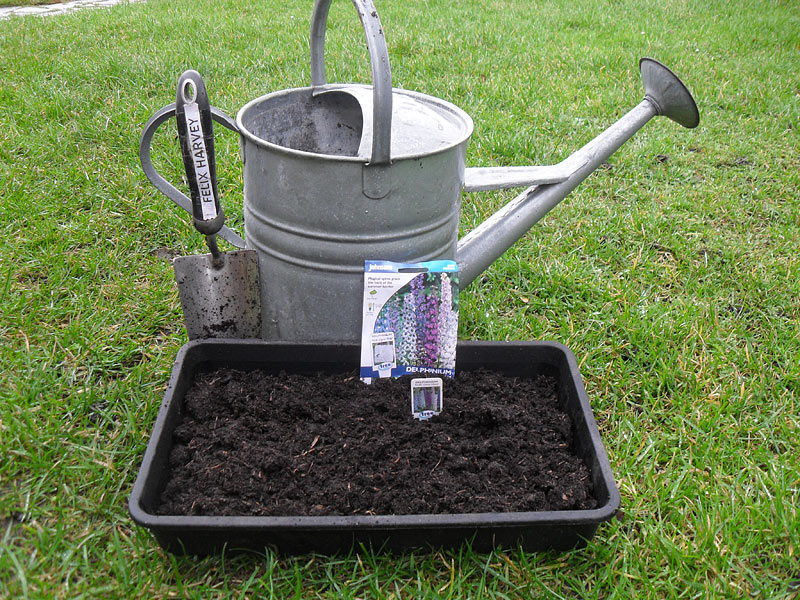
Planting
- Grow in fertile, well-drained soil in full sun to light shade, with shelter from strong winds.
- Plant in the spring. Prepare the soil, mixing in 2 to 4 inches of compost.
- Delphiniums are very difficult to grow from seed. Buy as a potted plant at the nursery.
- Dig a hole twice the diameter of the plant’s container. When planting, ensure that the top of the root ball is level with the soil.
- In the spring, broadcast lime, wood ashes, or a mixture of the two over this alkaline-loving perennial.
Care
- Insert supports no later than midspring or when the plants reach 12 inches high. Stake the low-growing perennials with twiggy, brushwood support. The taller, large-flowered delphiniums need sturdy stakes.
- Soil should not dry out. Water plants during the summer if rainfall is less than 1 inch per week.
- For good-quality flower spikes, thin shoots when 3 inches high; leave a minimum of 2 or 3 shoots on young plants, and 5 to 7 shoots on well-established ones.
- In growth, water all plants freely, applying a balanced liquid fertilizer every 2 to 3 weeks.
- Deadhead by cutting spent flower spikes back to small, flowering side shoots.
- After delphiniums have finished blooming, cut flower stalks to the ground, and new, though smaller, flower stalks will develop. The flowers will survive the coming cold days and even light frosts.
- If delphiniums need to be divided in the spring, remove and replant the new little plants growing around the outside of the clump. Discard the hard old heart.
Pests/Diseases
- Susceptible to slugs and snails as well as cyclamen mites.
- Powdery mildew, Southern blight, bacterial and fungal spots, gray mold, crown and root rot, white rot, rust, white smut, leaf smut, and damping off occur.
Harvest/Storage
- This elegant flower is good for a cutting garden. If you take the blooms into the house as soon as they open, they will bloom again.
- Add sugar to arrangements of delphinium.
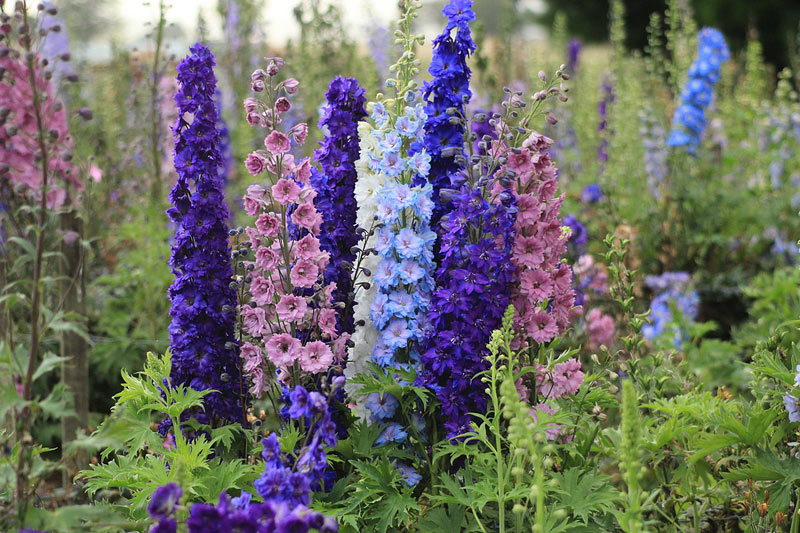
Recommended Varieties
There are dwarf-sized delphiniums and medium-sized as well as tall ones (growing up to 6 feet and higher).
- Belladonna Group: Upright, loose and branching perennials with single flowers that grow 3 to 4 feet tall. ‘Blue Bees’ is a Belladonna producing clear blue flowers with white centers.
- Elatum Group: These are the tallest spiked hybrids growing to 6 feet or more. ‘Blue Nile’ is a medium plant bearing semi-double, bright, and mid-blue flowers with white centers (called bees). ‘Bruce’ is a tall Elatum bearing semi-double, violet-purple flowers, paler towards the center, with brown bees.
- Pacific Hybrids: Similar to Elatum Group, although not as tall, this hybrid is short-lived and often grown as annuals or biennials. ‘King Arthur’ bears plum flowers with white bees with 5- to 6-foot tall flower spikes.
Wit & Wisdom
Very young delphinium plants and delphinium seeds are poisonous. If ingested, they can cause nausea, twitching muscles, paralysis, and even death.

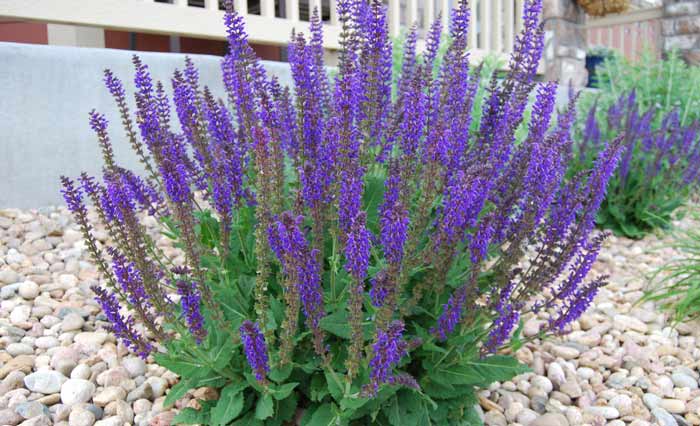
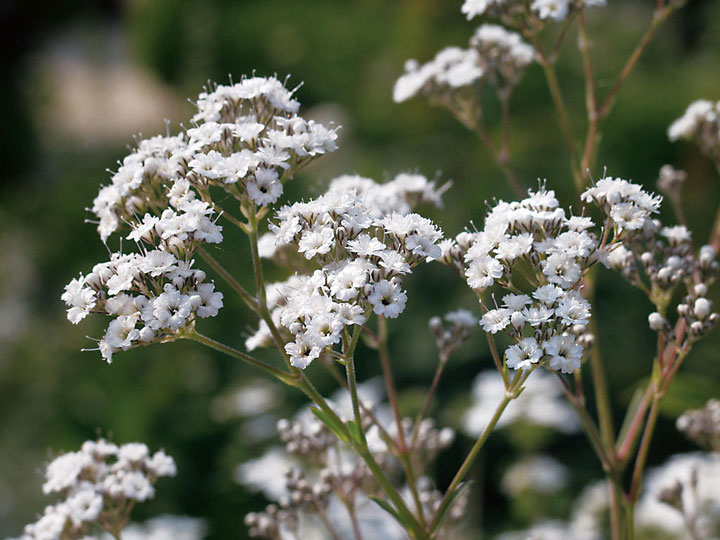
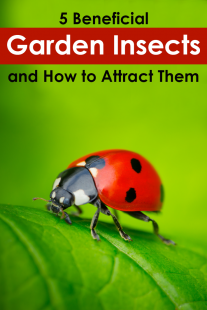
Leave a Reply